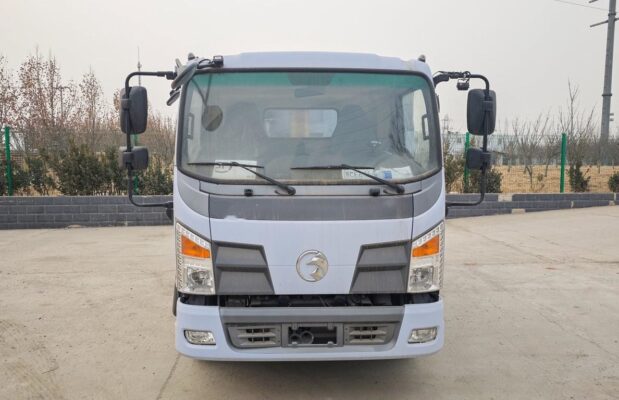전기 트럭 뉴스
Why Do Electric Vehicles Use Lead-Acid Batteries?
The presence of lead-acid batteries in 전기 자동차에스 (EVs) might seem counterintuitive given the modern emphasis on lithium-ion batteries. 하지만, lead-acid batteries are still utilized in certain EV applications due to their unique characteristics and advantages. This article explores why EVs incorporate lead-acid batteries, examining their energy density, cost-effectiveness, reliability, and other factors.
1. The Versatility of Lead-Acid Batteries
Energy Density for Auxiliary Applications
While lead-acid batteries are rarely used as the primary energy source in modern EVs, they excel in auxiliary applications:
- Supplying Low-Voltage Systems: Most EVs, including those powered by lithium-ion batteries, require a 12-volt lead-acid battery for traditional automotive functions such as powering lights, infotainment systems, and safety features. This separation ensures that critical systems remain operational even if the main battery fails.
- Energy Density in Context: Although lithium-ion batteries dominate in terms of energy density for propulsion, lead-acid batteries provide sufficient energy storage for auxiliary functions without significantly impacting overall vehicle performance.
Reliability in Auxiliary Roles
Lead-acid batteries are highly dependable in fulfilling their secondary functions. Their ability to deliver consistent power in a cost-effective manner makes them an ideal choice for auxiliary systems in EVs.
2. Cost-Effectiveness and Accessibility
One of the primary reasons for the continued use of lead-acid batteries in EVs is their low cost:
- Affordable Manufacturing: Lead-acid batteries are relatively inexpensive to produce compared to lithium-ion batteries. This makes them a cost-efficient solution for non-propulsion tasks in EVs.
- Widespread Availability: Lead-acid batteries have been in use for decades, ensuring widespread availability of components and expertise in manufacturing, maintenance, and recycling.
3. Durability and Proven Technology
Long Cycle Life
Lead-acid batteries have a long operational life when used in specific, low-demand roles:
- Deep Cycle Performance: Advanced lead-acid batteries, such as AGM (Absorbent Glass Mat) variants, offer enhanced cycle life, making them suitable for EV systems that require dependable power over time.
- Tolerant to Overcharging: Lead-acid batteries are relatively resistant to damage from overcharging, reducing the need for complex battery management systems.
Proven Technology
The extensive history of lead-acid batteries in automotive applications ensures their reliability:
- Mature Manufacturing Processes: Decades of development have resulted in efficient production and consistent quality.
- Field-Tested Durability: Their use in millions of internal combustion engine vehicles has proven their reliability in various conditions, from extreme heat to freezing temperatures.
4. Compatibility with EV Design
Lead-acid batteries are well-suited to complement the high-tech systems in EVs:
- System Integration: They are easy to integrate into existing EV architectures without significant redesign.
- Weight Considerations: While heavier than lithium-ion batteries, their use in auxiliary roles means the weight impact is minimal, especially in vehicles designed to accommodate heavy propulsion batteries.
5. Recycling and Environmental Considerations
High Recycling Rates
Lead-acid batteries are among the most recyclable battery types, with established recycling programs worldwide:
- Closed-Loop Recycling: Nearly 99% of lead-acid batteries are recyclable, and their components—lead, plastic, and sulfuric acid—can be reused in new batteries.
- Environmental Impact Mitigation: While lithium-ion batteries are gaining ground, their recycling infrastructure is still developing. Lead-acid batteries offer a more sustainable option in the interim.
Lower Initial Environmental Footprint
Producing lead-acid batteries requires less energy than lithium-ion alternatives, resulting in a smaller carbon footprint during manufacturing.
6. Safety and Robustness
Lead-acid batteries are inherently safer than many other battery chemistries:
- Stable Chemistry: The lead-acid chemical composition is less prone to thermal runaway or combustion compared to lithium-ion batteries.
- Robustness: They are highly resistant to physical damage and extreme conditions, making them ideal for auxiliary roles that might involve frequent cycling or exposure to harsh environments.
7. Why Aren’t Lead-Acid Batteries Used for Propulsion?
Despite their advantages in auxiliary roles, lead-acid batteries have limitations that make them unsuitable for EV propulsion:
- Lower Energy Density: Lead-acid batteries store significantly less energy per unit weight compared to lithium-ion batteries, resulting in heavier vehicles with shorter ranges.
- Limited Lifespan Under High Demand: While durable under light use, lead-acid batteries degrade quickly when subjected to the deep discharge cycles required for EV propulsion.
- Slow Charging Rates: Lead-acid batteries charge more slowly than lithium-ion counterparts, making them impractical for the rapid recharging demands of modern EVs.
8. Future Trends and Alternatives
As EV technology continues to evolve, the role of lead-acid batteries may diminish, but they are unlikely to disappear entirely:
- Enhanced Lithium-Ion Systems: Lithium-ion batteries are increasingly being used for both propulsion and auxiliary functions, reducing reliance on lead-acid batteries.
- Solid-State Batteries: Emerging technologies such as solid-state batteries promise higher energy density, faster charging, and greater safety, potentially replacing both lithium-ion and lead-acid batteries in the long term.
- Hybrid Approaches: Some manufacturers are exploring hybrid systems that combine the strengths of multiple battery chemistries for specific roles.
Conclusion
The use of lead-acid batteries in 전기 자동차s is a practical decision driven by their cost-effectiveness, reliability, and compatibility with auxiliary systems. While they are no longer suitable for propulsion due to their weight and energy density limitations, their strengths in low-demand applications make them an essential component of many EV designs.
As battery technology continues to advance, the role of lead-acid batteries may evolve. 하지만, their proven reliability, recyclability, and affordability ensure that they will remain a valuable part of the automotive landscape for the foreseeable future.





